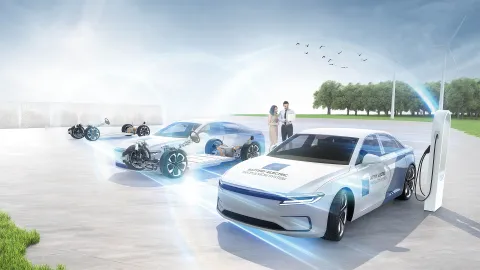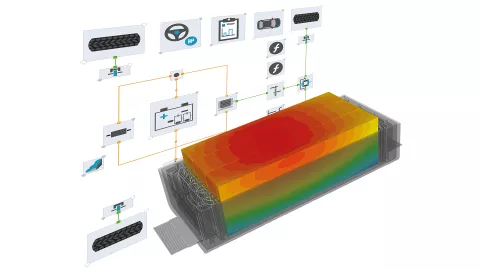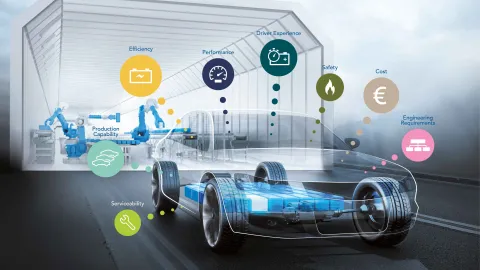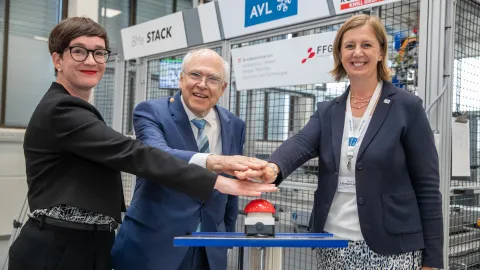
Most manufacturers are already using engineering simulations to develop batteries. However, the models for this utilize a simplistic setup of framework conditions that is to be used to develop a specific property or functionality of the battery.
This procedure is not sufficiently conclusive for us at AVL. Which is why we use the much more complex method of virtual validation instead. We have the broadest spectrum of options in this area, which extends as far as a fully virtual validation environment, including all relevant influencing factors. This is because the only way to draw reliable conclusions about the behavior of batteries is to consider all framework conditions.
That is why we perform almost all our tests as virtual validations – for example, fuel fire tests. Here we not only simulate the heat of the fire, we also simulate its gas dynamics. Sometimes this can result in the battery catching fire much sooner than you would expect by simply looking at the temperature emitted from the flames.
Design Analyses
Our simulation models investigate all characteristics and all interactions of your existing battery design. We provide you with a detailed report of the results.
Design Proposals
Based on the design analysis, we devise specific optimization suggestions for you. In doing so, we break down the exact details of the improvements and which modifications are needed to achieve them.
Concepts for New Variants
When developing and enhancing batteries and appropriate derivates, we devise new design proposals for you, based on our virtual models. This enables you to implement your development goals optimally.
Validation
You can use our virtual validation to secure your battery design for the final model for series production (design freeze). In addition to “pass” or “fail”, our assessment also contains specific details on why a test was not passed.

The optimum packaging of cells is incredibly important with regard to swelling and breathing in particular – two phenomena that occur in every battery. Safe integration is crucial, especially in terms of fast-charging capability.
– Bernhard Brunnsteiner, Skill Team Leader Battery Cell, System & Functions







